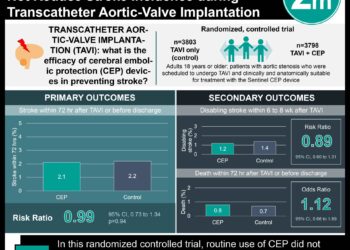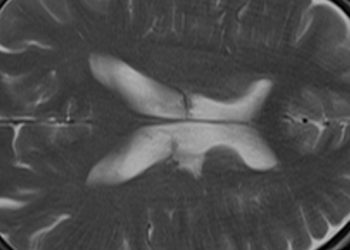Long term exposure to ambient fine particulate matter and incidence of stroke
1. Exposure to high levels of ambient fine particulate matter over time is significantly associated with incidence of stroke.fine p
Evidence Rating Level: 1 (Good)
Ambient air pollution is a major public health concern in China and worldwide. Studies on short-term exposure to ambient fine particulate matter of diameter less than or equal to 2.5 mm (PM2.5) in China have reported increased risks of hospital admission for stroke. However, evidence of negative impacts of long-term exposure to air pollution is limited, especially in China, where ambient air pollution levels can be high. In this prospective cohort study, 117,575 individuals from the Prediction for Atherosclerotic Cardiovascular Disease Risk in China (China-PAR) project without stroke at baseline were studied to assess the association of long-term exposure to ambient PM2.5 and incidence of total, ischemic, and hemorrhagic stroke between 2000 and 2015. The China-PAR project was designed to investigate patterns of cardiovascular diseases and associated risk factors in the general Chinese population. At baseline, participants had a mean age of 50.9 years, 41.0% were men, and 23.9% were current smokers. Those with higher exposure to PM2.5 were less likely to be current smokers and had a higher BMI and systolic/diastolic blood pressures. During the study follow-up period, the average PM2.5 at residents’ residential addresses was 64.9 mg/m3 (range 31.2 to 97.0 mg/m3). Researchers found that during 900,214 person years of follow-up, there were 3,540 cases of incident stroke (ischemic: 63.0%; hemorrhagic: 27.5%). In both the age and sex adjusted model, and after multivariate adjustment, higher exposure to PM2.5 was significantly associated with an increased risk of stroke (p<0.001 for both). When participants were categorized according to quarters of exposure to PM2.5, researchers found that participants in the third (59.7 to 78.2 mg/m3) and fourth (78.3 to 97.0 mg/m3) levels had an increased risk of incident stroke (third: HR 1.30, 95% CI 1.13 to 1.49; fourth: HR 1.53, 95% CI 1.34 to 1.74), ischemic stroke (third: HR 1.49, 95% CI 1.25 to 1.77; fourth: HR 1.82, 95% CI 1.55 to 2.14) and hemorrhagic stroke (third: HR 1.40, 95% CI 1.07 to 1.82; fourth: HR 1.50, 95% CI 1.16 to 1.93) when compared to those in the first quarter (31.2 to 54.5 mg/m3). For each increase in 10 mg/m3 in PM2.5 concentration, the increased risks of incident stroke, ischemic stroke, and hemorrhagic stroke were 13% (HR 1.13, 95% CI 1.09 to 1.17), 20% (HR 1.20, 95% CI 1.15 to 1.25), and 12% (HR 1.12, 95% CI 1.05 to 1.20), respectively. Data on participants’ daily activity and location were not collected, which may have resulted in misclassification of exposure. Overall, this study suggests that long-term exposure to ambient PM2.5 at high concentrations may increase the risk of incident stroke.
Click to read the study in BMJ
Image: PD
©2020 2 Minute Medicine, Inc. All rights reserved. No works may be reproduced without expressed written consent from 2 Minute Medicine, Inc. Inquire about licensing here. No article should be construed as medical advice and is not intended as such by the authors or by 2 Minute Medicine, Inc.






